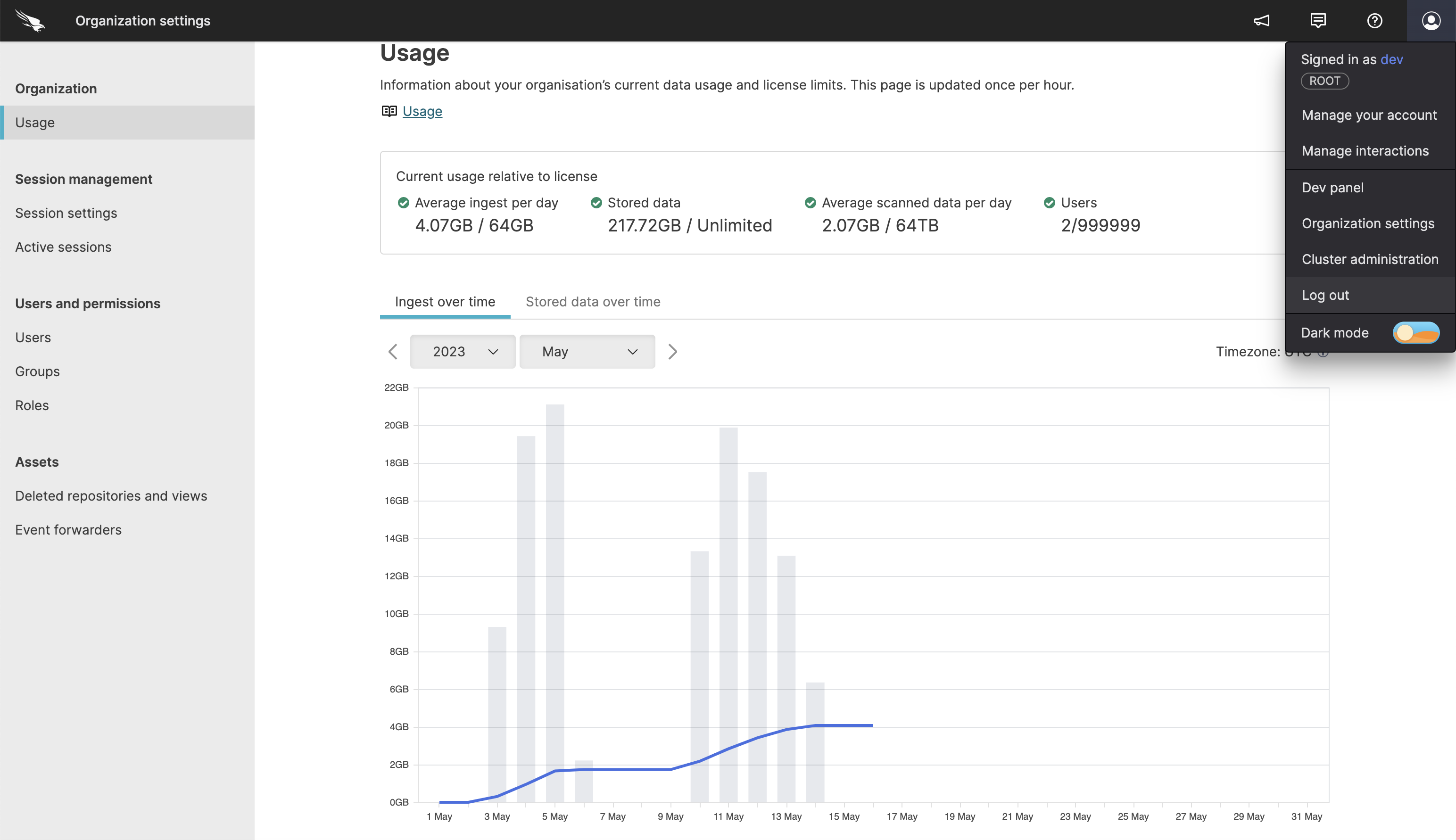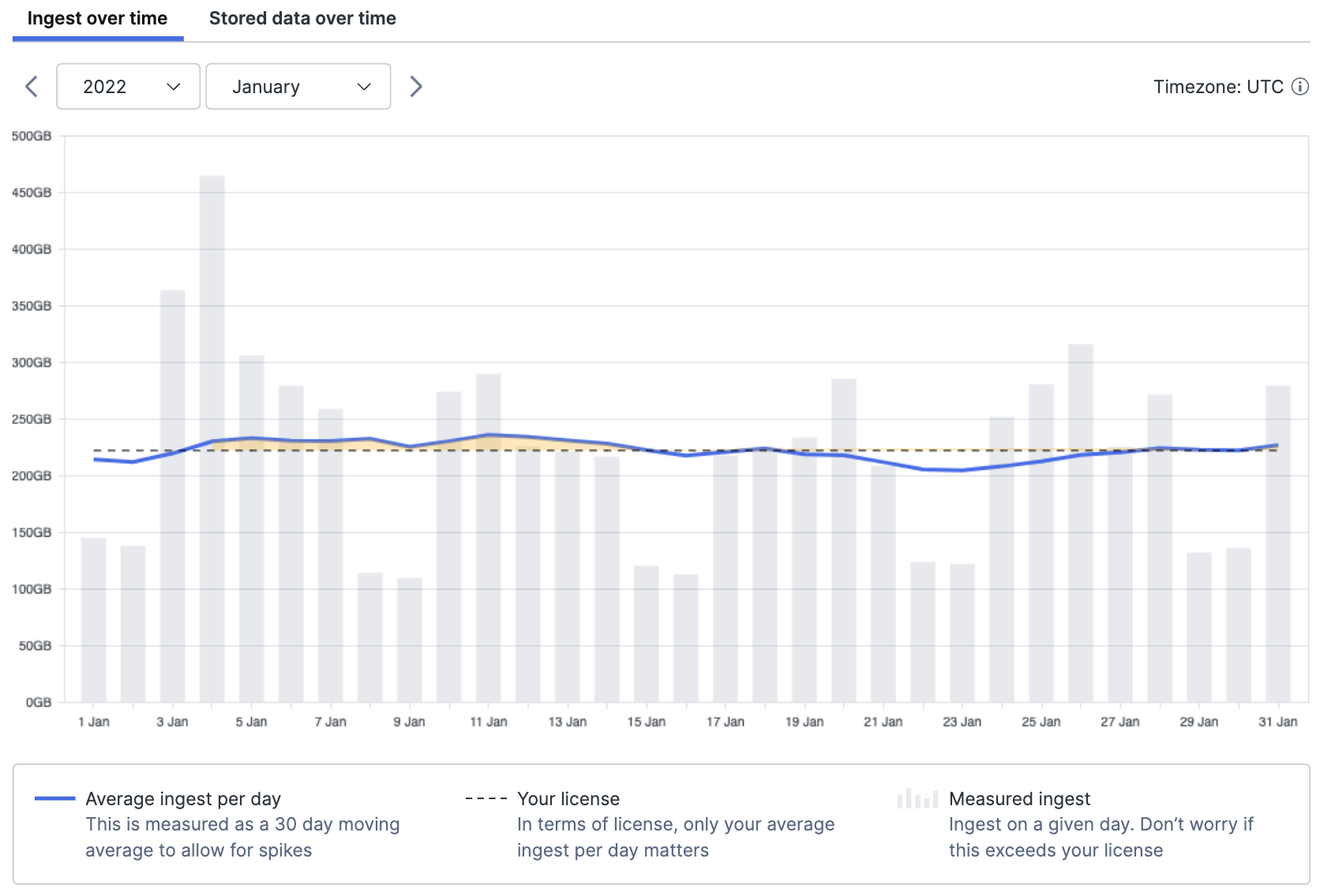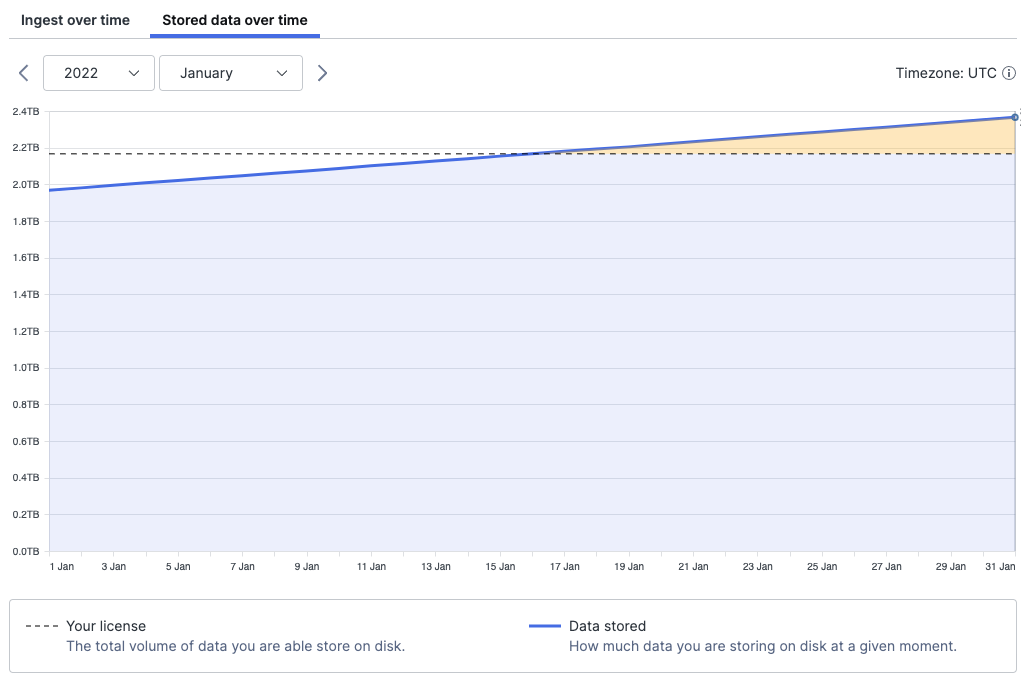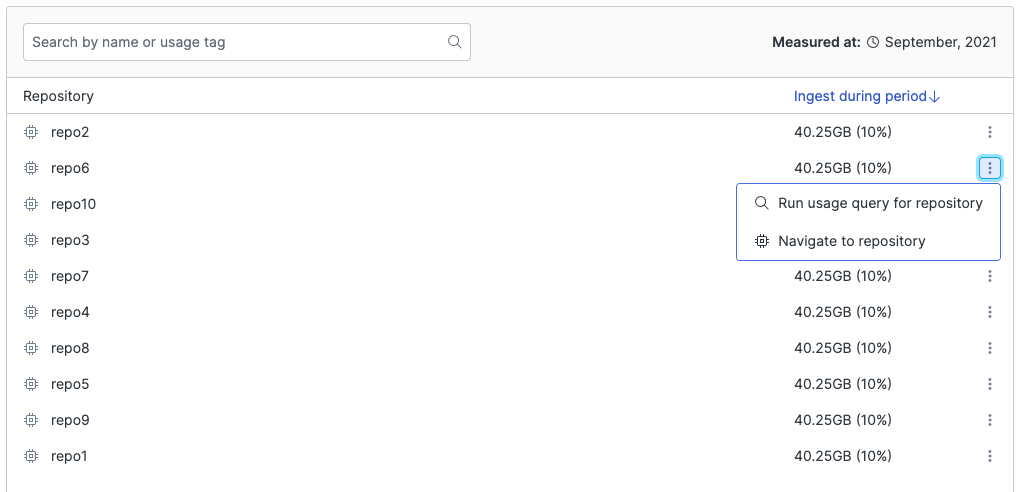Monitoring Usage in LogScale (up to v1.93.0)
Security Requirements and Controls
View usagepermission
Usage and ingest accounting support was updated with new functionality in v1.94.0. For more information, see Measure and Manage Ingest Usage.
The Usage page in LogScale user interface
shows the usage relative to your license: the current status as well as
historical. These are the measurements that your LogScale contract is based
on. By using this interface, you can dig into those measurements and numbers
yourself.
Usage Page
On the Usage page, you can track and get an
overview of your organization's usage, which includes ingest, storage,
scanned data, and, if applicable, user seats.
The Usage interface is available to
organization owners only; from your profile account menu click
→
Usage to find it.
 |
Figure 21. Usage Page
Current Usage
The Current usage relative to license section gives you an indication of your usage at the current moment and whether you are going above or below your contracted values.
If you're exceeding your contract, the panel will indicate this with a warning.
The calculations displayed on this page do not apply to Falcon Long Term
Repository. For information on your Falcon Long Term Repository license
usage, please refer to the Usage Reports
page in the Falcon documentation.
 |
Figure 22. Current Usage
Ingest Over Time
In the Ingest over time chart, you can get an overview of ingestion within a selected time period.
Average ingest per day is calculated as a 30-day moving average. This means, for example, that the value shown for the 15th of July is the average daily ingest in the period 15th of June to 15th of July. This is to allow for spikes in ingest.
The ingest chart also shows the license limit, and an indication for which periods the rolling average has passed the limit.
 |
Figure 23. Ingest Over Time With Spikes Example
You can select a single date, which will update the data shown in the repository table.
Stored Data Over Time
In the Stored data over time chart, you can get an overview of the storage usage within a selected time period.
The storage chart will also show the license limit and indicate for which periods the storage has passed the limit.
 |
Figure 24. Stored data Over Time
As was the case for the ingest chart, you can select a single date, which will update the data shown in the repository table.
Repository Table
For both ingest and stored data, you can get an overview of the usage data based on the repositories that the data is in.
The data shown in the table correlates with the selected year, month and day from the chart.
In the table, you are able to search for specific repositories and sort based on name and value to get a better idea of which repositories have the most or least usage.
From the table, you can navigate to each repository or run a usage query in humio-organization-usage, which will show logs for that particular repository (#repo=NAME_OF_REPO.).
Note
You must have permissions to search in the humio-organization-usage repository for this to work as intended.
 |
Figure 25. Repository Table
What We Measure
The measurements your contract is based on are the following: ingested data, stored data and scanned data, and possibly, the number of user seats, depending on the contract.
Ingested Data
Ingested data is the amount of data in bytes after it was parsed in LogScale.
Stored Data
Stored data is the amount of data that you have stored in LogScale, in bytes.
Scanned Data
Scanned data is the amount of data that was searched through when running queries. Every time a query runs, LogScale measures the amount of data it needs to look into to answer the query.
User Seats
The number of users your contract limits you to, if any.
Measuring Usage
LogScale collects your usage data by logging it internally in LogScale.
The diagram below shows the flow of ingest and all the points where LogScale measures your usage for infrastructure maintenance needs.
Note
Parsing can either reduce or expand the log size. Adding to your data during parsing can make it more useful, but carries additional ingest cost as it increases the amount of data. For information about the ingest cost calculation, see Measure Data Ingest.
 |
Figure 26. Ingest Flow
M5 is the point used to measure ingested data. For more information, see Measure Data Ingest.
LogScale Measurement Repositories
LogScale logs data volumes in multiple repositories. Use them to run audits to see how much data you ingest, which repositories it went to, and how much you are storing.
humio-measurements Repository
The humio-measurements repository holds more fine-grained details, and has 30 days retention. For more information, see The humio-measurements Repository.
humio-usage Repository
The logs in this repository are the results of an hourly query to the humio-usage repository. For more information, see The humio-usage Repository.